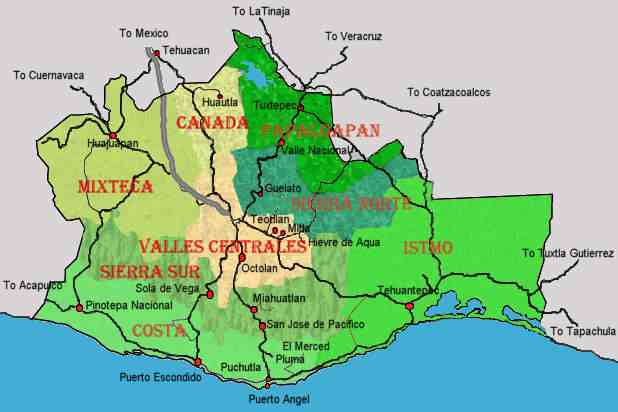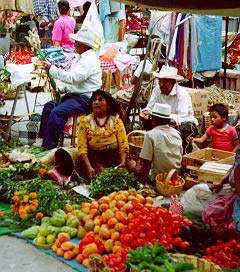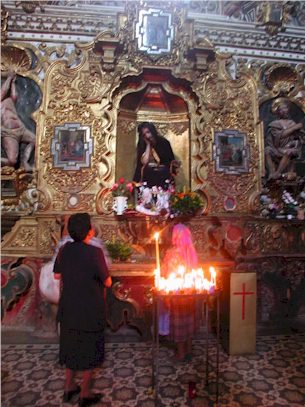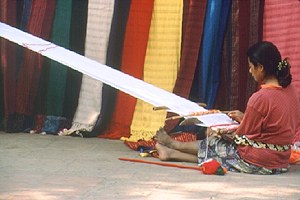|
|
|
|
A Country We Really Know Nothing About Interview with Carlos Ramon Lopez Carlos requested that his picture not be posted! Carlos Ramon Lopez was born in Juxthlauaca, Oxaca, a city with a population of about 1 million residents. Carlos has 4 siblings, all of which are female. Carlos was raised in Juxthlauaca until he turned nineteen, when he decided to come to the United States. Carlos said that he came to the United States because he felt like he could make a better life for himself, specifically monetarily speaking. Upon his arrival, Carlos changed companies a few times, and finally found a home with his current employer, where he has been working for 7 years. Carlos is now a crew/Foreman trainer. He is responsible for creating new curriculum for the weekly classes he teaches to all existing and new foreman, as well as orientation meetings with all new foreman. Carlos also conducts interviews for all of the new hires. Carlos and I met through a common employer. The following questions were created to ask Carlos, but as the interview went on, only served as a guide for the conversation. When greeting an Oaxacan, how close do you get, and how intimate is the contact? That all depends! When greeting male to female after about 1 year of friendship, it would be appropriate to hug. Females will always hug. Men will never hug, only shake hands or nod. Men, inregards to families, will rarely embrace or show affection to their sons. In regards to business, men keep their distance with other men. Carlos stated that Mexican men take out their frustration with aggression. He said that if a Mexican man felt his space was violated, he would probably push away the violator.
How do Oaxacan’s deal with silence in conversation? We do not like silence moments. WE can carry on many conversations at the same time. But, an exception would be authoritative figures. When dealing with somebody like a boss that has authority, silence is allowed.
How does dress play into your culture? Those that are from Southern Mexico are very into their dress and their colors. In oxaca there are 13 different regions and each region has its own colors and dress styles. The colors depend on the type of crops that were historically grown in that area. Each community has their own dances as well, that are tied into the colors of the crops. There is a time of the year when there is a celebration called the Fiesta de la Gelagetza when all 13 regions come to the capital dressed in their colors and perform their traditional dances. In the working world, even the blue collar workers dress nicely to go to work. The older population will never be seen with shorts or dressed sloppy in public or at home.
How big of an importance are meal times? There are really 4 meals a day: Merienda: Early morning hand made bread and coffee Desyuno/Almuerca: 9:00 – 11:00 A.M. Juevos Ranchers, Quesadillas, Frijoles Comida: 2:00 P.M. Large meal such as fish, steak, or chicken Cena: 9:00 P.M. Very light snack before bed. (Typically very big at holiday’s) Typically the men leave early for work and will have coffee and bread. The women are the only ones that cook, and most of the time the kids would take Almuerca and comida to their father at work. Carlos said that each day a different child would take the meal to his father because this was their special time with their dad.
How punctual are the Oxacan’s? Not just the Oaxacan’s, but the Mexican people as a whole are not very punctual people. Time is not really always an issue unless you are going to a job interview. You could show up for a job interview at 1:00 p.m. and not be seen until the next day. But, school is definitely an exception. If you were late to school, the gates would just be locked, and you had to go back and try it again the next day to try it again. Carlos told a story about a visit that he made recently as he returned to his home town for the first time in 20 years. Carlos said that the Governor made a deal about how the floor in the town center was going to be done for the celebration for the Mexican Independence day September 16th. The floor in front of the Cathedral was a huge deal for the town, and the Governor promised time after time that the floor was going to be completed. When the time came, the completion of the floor fell miserably short. Carlos said that no voices were raised when the floor was not complete because time was not a big issue. The governor on the last day said that they ran out of time, and it was no big deal.
Do the Oaxacan’s stay in the same profession their entire life? Yes, they are very loyal people. There is no jumping from one company to another, mostly because there is no place to jump too. Carlos recently returned to Mexico, and he said that he saw the same people in the the same stores that were there 20 years ago. Carlos also said there are not many opportunities to be in the work force even now, and that he is very grateful that he migrated 20 years ago.
From this point on in the interview, I just started bringing up topics, and Carlos began to elaborate.
Culture: The Mexican communities are very collectivistic by nature. They have learned to survive as a community. Families are responsible for all members of the family. The stores work on a credit system, and are paid off once or twice a month. If there were to be a member of the family that went crazy, and could no longer afford to pay the grocery bill, the store owner would quit selling to the other members of the family until the account was brought current.
Religion: Each town has their own Saint, and a holiday in the year associated with that particular Saint. Each trade has its own Saint as well. On the town’s day, everybody would hangout and drink mescal. On the day dedicated to each trade, that particular tradesman, and his friends, would be allowed to miss work to hang out and drink mescal. The holidays on Oaxaca are very unique because they are a mix between Catholicism, and the native culture.
Power distance: The power distance level is very high, but the tight feeling of family is appreciated. The upper level management rarely associates with the workers. On the other hand, the workers are more driven when they feel like the company is one big family. In a family situation, the father is definitely the main authority, and the next oldest sibling falls in order. The mother enforces the line of authority. Adults respect their parents so much that even adults take advice from their parents.
Gender: Only in big cities are women involved in big business. Women very occasionally will make little deals with food or jewelry. The man is definitely the bread winner for the family, and the wife will fully support him.
Some of the last comments that Carlos made were stating that all Mexicans cannot be thrown into the same category. Southerners are very different from Northerners. Southerners are very culturally driven, whereas Northerners are driven by prosperity. |
|
| Author: Jack Black | |




